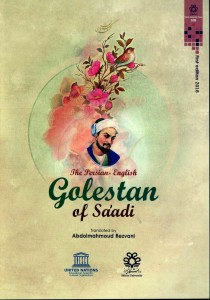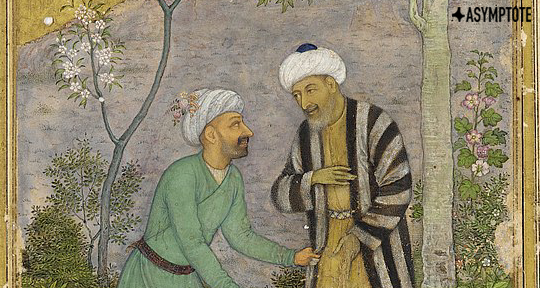In comparing various translations of the same text, one considers several factors—amongst them: accuracy, consistency, and the ease in which the secondary text reads in its newfound state. New translations of classic texts are further expected to provide knowledge and profundity that other extant translations missed. The writings of Persian poet Sa’di are intimately known and cherished in his original language, but its multiple iterations in English have each developed separate and, at times, misleading voices. In this following essay, writer and translator Siavash Saadlou discusses Mahmoud Rezvani’s new translation of Sa’di’s timeless Golestan, and how Rezvani’s insight into the book and his aptitude for translation have allowed his work to rise above its predecessors.

Yet Sa’di loved the race of men,—
No churl, immured in cave or den
In bower and hall, he wants them all,
Nor can dispense
With Persia for his audience;
They must give ear,
Grow red with joy and white with fear;
But he has no companion;
Come ten, or come a million,
Good Sa’di dwells alone.—Ralph Waldo Emerson
Mahmoud Rezvani’s new translation of Sa’di’s Golestan—a thirteenth-century literary lighthouse best known for its creative composition, moralistic maxims, and lush language—challenges the notion suggesting that fidelity and beauty are mutually exclusive in literary translation. When Rezvani, now in his mid-sixties, proposed the idea for the first time, the literati in Iran thought it “preposterous” and “impossible.” Their deeply held cynicism was derived in part from Golestan’s ornate Persian, mixed with bombastic Arabic and Qur’anic allusions, that render its prose and poetry extraordinarily labyrinthine. It also stemmed from Sa’di’s shrewd use of ambiguities and amphibologies as well as heteronyms and homographs throughout the work; and Sa’di’s rhymed prose (Saj’)—which can be divided into three categories: parallel, symmetrical, and lopsided—made the task ahead all the more formidable. Choosing le mot juste was yet another major hurdle to overcome. Sa’di was, after all, a writer best known for his impeccable, inimitable turn of phrase. His command over both Persian and Arabic was beyond compare; in fact, Sa’di was as recognized for his mastery of language as Hafiz was for his consummate ambiguity. The difficulty, therefore, lay in translating Sa’di’s wide palette of vocabularies as well as the supremely intriguing juxtaposition of images and ideas. Then there was the musicality which, though often ignored in Western translations, is the lifeblood of classical Persian literature. It is understandable, then, that it took Rezvani years to pluck up the courage to even consider translating Golestan and ten years to complete the endeavor. READ MORE…

